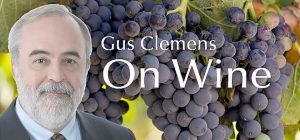Wine descriptions often refer to “texture.” What the heck does that mean? There is a texture difference between silk and sandpaper. There is a texture difference between a crisp apple and creamy mashed potatoes. Wine is a liquid. Liquid is liquid texture, right?
Well, no. Not with wine. Red wines have texture, usually tied to tannins. Pinot noir texture often is “silky.” Sangiovese often is “grippy.” Zinfandel often is “oily.”
White wines seldom have significant tannins, so other qualities influence texture. With whites, weight on the palate, acidity, and mouthfeel matter. Descriptors often include creamy (malolactic fermentation), sharp (no malolactic), unctuous (depends on the grape).
Sauvignon blanc typically has a lower pH—greater acidity—so it feels prickly, punchy, zesty, light. Chardonnay typically has a higher pH—lesser acidity, especially after malolactic fermentation and time in oak—so it has a rounder, thicker, more subtle texture.
Wines with higher alcohol have a heavier, more viscous, fuller texture whether they are red or white. Often wines, especially whites with floral notes and low alcohol, have less texture, or their texture is airy, nuanced. Red wines with assertive tannins, odors, and alcohol have more brutal, earthy, pay-attention-to-me texture.
Winemaking influences texture. Aging on the lees—dead yeast cells created during fermentation—imparts creamy texture. Stirring the lees—bâtonnage—creates a richer texture. Malolactic fermentation—withheld, partial, or complete—creates texture. The more malo, the creamier the texture. Less malo, less creaminess.
Barrel choice influences texture. The type of oak, the age of the barrels matter. New oak imparts more oak flavors. Previously-used barrels impart less oak. Newer oak imparts an oily texture that glides across the palate, especially when combined with malolactic fermentation. Meanwhile, no-oak and no or limited malo results in sharp texture. In the case of no-oak New Zealand sauvignon blanc, texture can be described as a razor blade on the tongue. Trust me, that is considered a good thing, especially paired with food.
Such is the texture of wine.
Tasting notes
• Clean Slate Riesling, Mosel, Germany 2020: Classic Mosel riesling at astonishing price. Off-dry with citrus notes, very good balancing acidity. Fruit-forward, smooth, crisp, fun, tasty easy drinker. $11-13 Link to my review
• Acrobat Rosé Wine, Oregon 2021: Crisp, clean, nice strawberry fruity pure Oregon pinot noir play. Balanced, tart, fruity-sweet (not sugar sweet). $14-15 Link to my review
• Chalk Hill Estate Red, Chalk Hill Appellation 2018:
Built to be widely accepted premium California cab-led blend. Fully succeeds. Rich, tasty red fruits. $53-57 Link to my review
Last round: What do you get when dinosaurs collide? Tyrannosaurus wrecks. Wine time.


